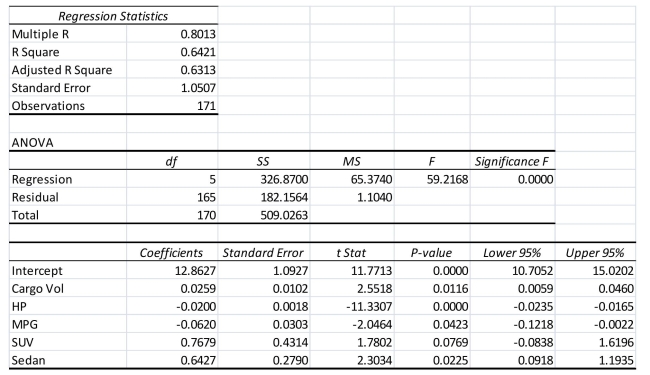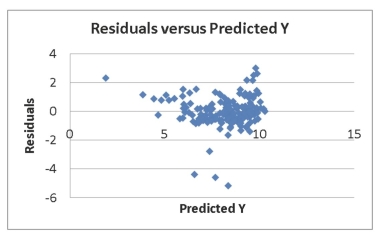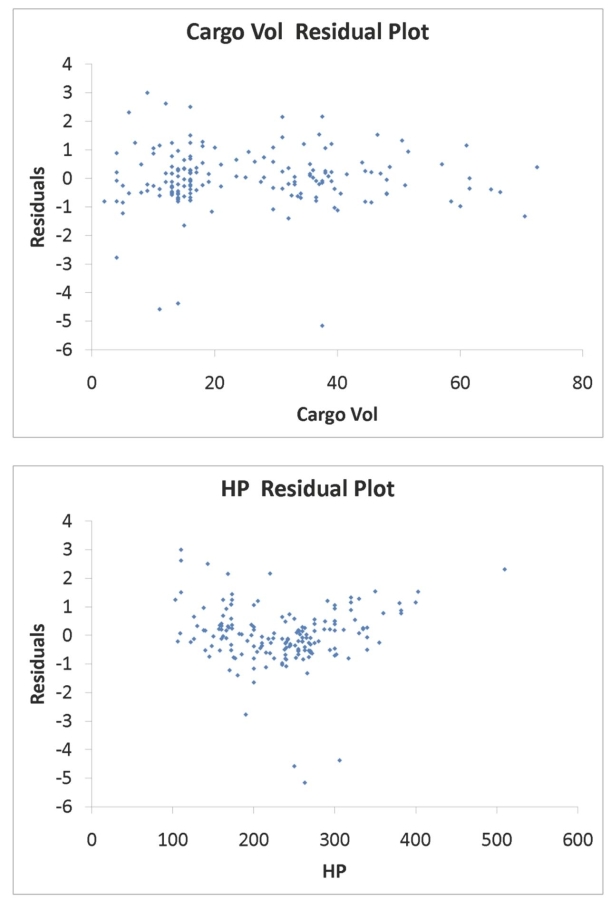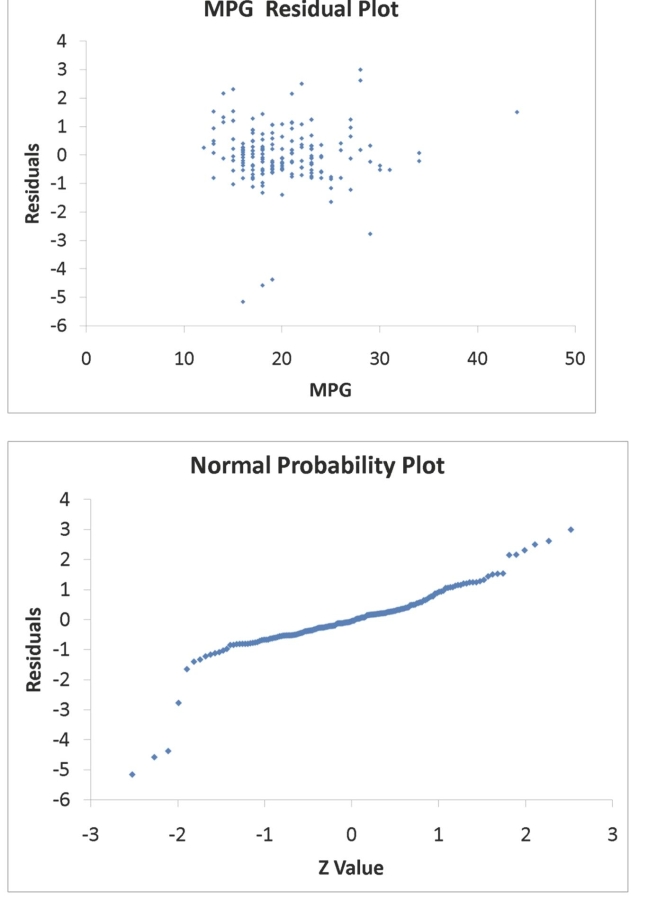SCENARIO 18-9 What are the factors that determine the acceleration time (in sec.)from 0 to 60 miles per hour of a car? Data on the following variables for 171 different vehicle models were collected: Accel Time: Acceleration time in sec. Cargo Vol: Cargo volume in cu.ft. HP: Horsepower MPG: Miles per gallon SUV: 1 if the vehicle model is an SUV with Coupe as the base when SUV and Sedan are both 0 Sedan: 1 if the vehicle model is a sedan with Coupe as the base when SUV and Sedan are both 0 The regression results using acceleration time as the dependent variable and the remaining variables as the independent variables are presented below. SCENARIO 18-9 cont.  The various residual plots are as shown below.
The various residual plots are as shown below.  SCENARIO 18-9 cont.
SCENARIO 18-9 cont.  SCENARIO 18-9 cont.
SCENARIO 18-9 cont.  The coefficient of partial determination
The coefficient of partial determination  of each of the 5 predictors are, respectively, 0.0380, 0.4376, 0.0248, 0.0188, and 0.0312. The coefficient of multiple determination for the regression model using each of the 5 variables
of each of the 5 predictors are, respectively, 0.0380, 0.4376, 0.0248, 0.0188, and 0.0312. The coefficient of multiple determination for the regression model using each of the 5 variables  as the dependent variable and all other X variables as independent variables (
as the dependent variable and all other X variables as independent variables (  )are, respectively, 0.7461, 0.5676, 0.6764, 0.8582, 0.6632.
)are, respectively, 0.7461, 0.5676, 0.6764, 0.8582, 0.6632.
-Referring to Scenario 18-9, ________ of the variation in Accel Time can be explained by
Definitions:
Illusory Contract
An agreement that lacks a real obligation from one or more parties, making it unenforceable.
Implied
Describes something that is suggested or understood without being directly expressed or stated.
Conditions
Terms or elements in contracts that affect how parties' responsibilities are enforced or interpreted.
Conditions Precedent
Legal terms that must be met before a party is required to perform under a contract.
Q6: The amount of juice that can be
Q14: A process is said to be out
Q68: Referring to Scenario 20-5, what is the
Q71: Some business analytics involve starting with many
Q107: Referring to Scenario 20-1, if the probability
Q133: Referring to Scenario 18-10 Model 1, what
Q149: Referring to Scenario 16-13, what is the
Q150: Referring to Scenario 19-10, a c chart
Q222: Referring to Scenario 18-12, what is the
Q301: Referring to Scenario 18-9, what is the